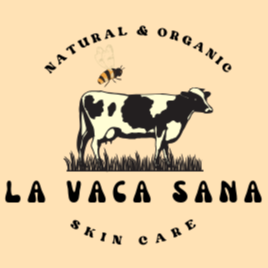The oil cleansing method is an all-natural, non toxic approach to washing your face. It's suitable for all skin types of all ages and is readily available and affordable for you to explore. The oil cleansing method doubles as an effective makeup remover as apposed to chemical drenched wet wipes.
The oil cleansing method has been used for thousands of years by ancient Greeks, Romans, and Egyptians. The important factor is the type of oil you use, as some people have found negative effects with particular oil types. First, choose oils that are non-comedogenic, meaning they don't clog your pores. Acne causing oils are comedogenic and build up oil in the pores. Non-comedogenic oils will actually have the opposite effect as they promote cleansing of the pores and allow them to remain hydrated. Secondly, avoid cheap, modern, oxidative oils... soybean, sunflower, safflower, canola, grapeseed. These oils are highly processed and highly refined, they are oxidative (unstable) to light, heat, and oxygen, making them dangerous to consume and to wear. They cause free radical damage (free radicals being molecules with at least one unpaired electron, who will steal electrons from healthy cells within our bodies, driving inflammation and reducing collagen in the skin, resulting in blemishes, dark spots, loose skin & wrinkles. Inside the body these free radicals cause abnormal cell proliferation).
Non-comedogenic carrier oils
A carrier oil is the main component used in skin and hair products that can 'carry' other oils that are less absorbable, spreadable, or not safe to use on their own (essential oils are best mixed in carrier oils rather than directly applied).
Cold-pressed sweet almond oil - full of antioxidants to fight free radical damage on the skin
Cold-pressed jojoba oil - the closest composition to our skins natural sebum oil, meaning jojoba will penetrate deeply and absorb well. Jojoba is light weight, non-greasy and a low irritant and kind on sensitive skin. It is rich in flavonoids, vitamins a, e, and b complex.
Apricot kernel oil - similar to our skins natural sebum oil, making it easily absorbable. Like jojoba, it is lightweight, non-greasy and full of potent antioxidants. At a fraction of the price of jojoba, this is a good substitute for similarity.
Non-comedogenic astringent oils
An oil that is an astringent means it stimulates the skin to contract, causing a tightening effect. Astringent oils can dry out the skin in some people so it is important to test these oils in a patch test first to find what suits you. This tightening effect is why the astringent portion of your cleansing potion is only 1/4 part.
Rosehip oil is the from the rosehip fruit produced by a rose bush. It's full of lycopene (natural antioxidant) and vitamin c. Rosehip oil is known to reduce redness and lighten the skin.
Cold-pressed castor oil is very astringent, for people with oily skin it is a great addition, otherwise use only a small amount. It is a humectant meaning it draws moisture into the skin and hydrates it. Castor oil contains both stearic and palmitic fatty acids, that are both natural emollients (hydrate and soothe the skin), and emulsifiers (bind and blend other ingredients), making it useful in oil mixtures.
Cold-pressed hazelnut oil is an astringent due to the tannin content. These tannins are also antioxidants for the same free radical fighting benefits as castor and rosehip. Hazelnut oil (cold-pressed) is rich in vitamin e and magnesium.
Consider drops of astringent essential oils. Not only does aromatherapy have cognitive benefits, but lavender, honey myrtle, lemongrass, neroli, frankincense, and palmarosa are all astringents that can be mixed into your cleansing oil combinations.
The Creation: Making your new cleansing potion
In a glass dropper bottle, mix your chosen oils at a ratio of 3 parts carrier oil to 1 part astringent.
Example 1 - more oily skin
100ml dropper
25ml castor oil
75ml jojoba oil
Example 2 - normal skin
100ml dropper
20ml rosehip oil
5ml castor oil
75ml apricot kernel oil
The Method: How to perform your oil cleanse
1. Using your dropper bottle apply a 20c size of oil onto your palm. massage it into your face and neck for no less than 1 minute, really working into all areas.
2. Using a warm wet flannel, wipe clean your entire face and neck.
3. Dry your face with a soft and gentle towel.
4. Moisturize with a hydrating tallow balm, applying liberally to your face and neck with a self massage.
Takeaways
Avoid comedogenic (pore clogging) oils that will cause acne break outs and black heads.
Avoid unnatural, cheap, oxidative oils.
Consider your carrier oils. This is the main portion of your cleansing potion, if costs are a factor, consider the cheaper priced oil that is still potent with beneficial fatty acids and vitamins. Of our list, the cheapest is apricot kernel oil, second sweet almond oil, and most expensive is jojoba oil.
Consider your astringent oils. Find an astringent that suits your skin best and don't be afraid to incorporate a small (few drops) of essential oils for added aroma and skin benefits. Always consider essential oils are highly potent and only small amounts are used. They mix very well in rosehip, jojoba, castor oil, and sweet almond oil.
Don't be afraid to mix your oils. You may want to keep it simple and use only one oil in your routine cleanse but know that oils (fats) will mix well together (emulsify). Please note water and oil will not emulsify without the help of an emulsifier (such as castor oil, jojoba oil, or avocado oil). If you store your fats with a water based product, such as a plant hydrosol, they will not mix together.
All of the oils listed in this blog are ok to store at room temperature.

